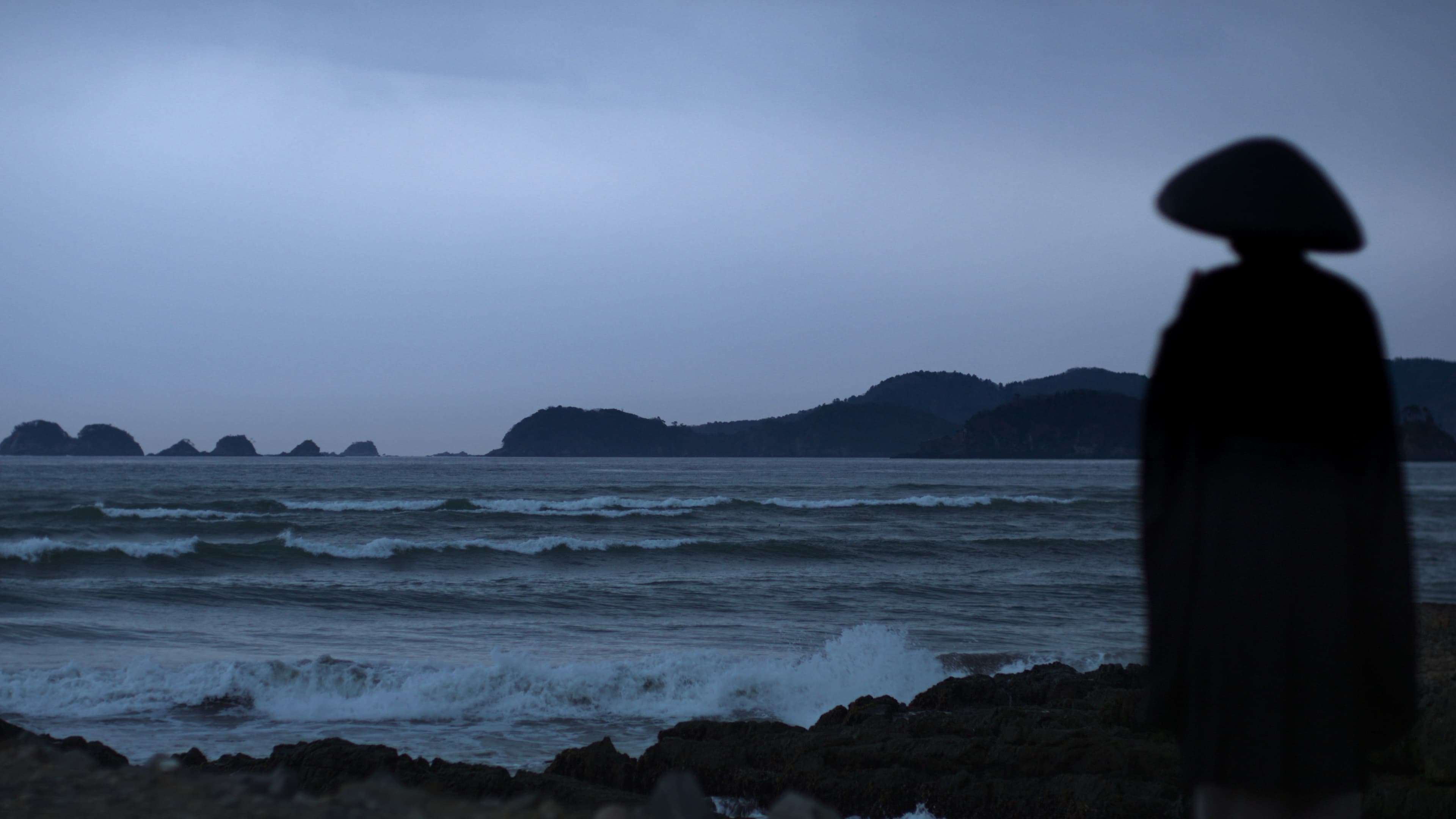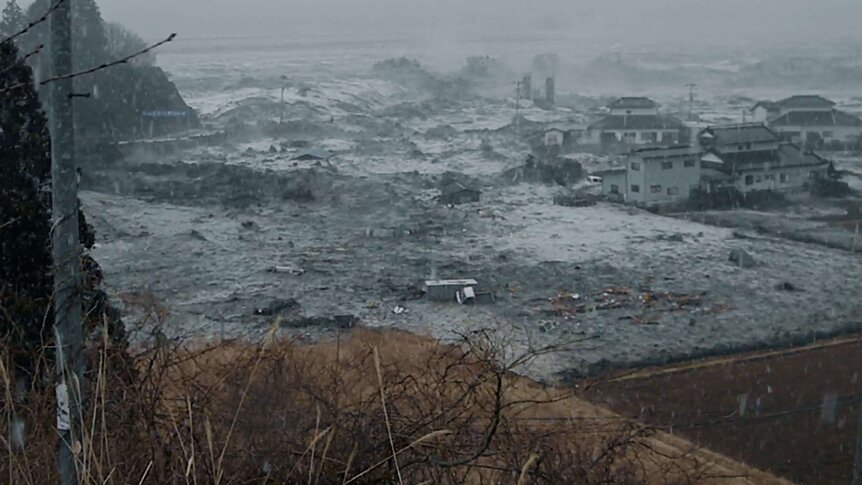Create a free profile to get unlimited access to exclusive videos, sweepstakes, and more!
Unsolved Mysteries is back with a 'corroborated' ghost story to creep up your October

Netflix’s iteration of the classic cold-case docuseries Unsolved Mysteries returned Oct. 19 with a second volume of six new cases that remain conundrums for their investigators. And as always, that includes cases involving the paranormal or sighting of UFOs. In the show’s 33-year history, there have always been cases peppered into each season that delve into topics that seem best suited to fans of The X-Files or Ghost Hunters over true-crime fanatics.
As it turns out, Unsolved Mysteries executive producer Terry Dunn Meurer admits to being a “true believer” and is a big reason the docuseries has always included tales of the metaphysical or UFO sightings. “Until somebody proves to me that ghosts don't exist, or UFOs don't exist, I will just believe that they do,” she admits to SYFY WIRE.
In Volume 1 of Netflix’s Unsolved Mysteries (released in July), the show painstakingly laid out the “Berkshires UFO” case in the late ‘50s that’s since been corroborated by dozens of eyewitnesses including a radio DJ. And in this new volume, the “Tsunami Spirits” investigates the many eyewitness accounts of ghosts haunting the Japanese town of Ishinomaki in the aftermath of the cataclysmic tsunami that killed 20,000 people.
Meurer explains to SYFY WIRE how Unsolved Mysteries has evolved with the times in presenting its special niche of “cases with no endings,” the latest chilling episodes, and how they choose their spooky cases that have given generations of watchers the heebie-jeebies.
For context, you’ve been a producer, writer and now executive producer on Unsolved Mysteries for 35 years. How has the evolution of the internet and now Netflix as a global programmer changed how you make the series?
Before, we didn't have the internet. We would literally use a newspaper clipping service. Or we would reach out, just cold-call local law enforcement trying to find cases. As the show picked up in terms of popularity, then people would send in stories. We would get mailbags full of mail tips and story suggestions.
Now, I think the thing that was so overwhelming in a good way when the first Netflix episodes premiered in July was how engaged the audience is because of social media. Now they can get into chat rooms and talk, and Reddit. They just get so involved in the clues and the leads, and what they think happened. It's wonderful to see the viewer engagement. We're hoping that that just generates more news, and more leads, and more buzz so that more people will watch. It just takes that one person to watch who has that clue. That's what we're always looking for. I'm always worried that people think, "Yeah, something bothers me, but I'm not going to say anything. I don't know. It's probably nothing." Then they don't send in their tip. We want people to send in their tips because you just never know, that one little piece might match with another piece that somebody sent in.
The show’s style and technique of recreations and even talking head interviews have evolved into really polished and cinematic episodes for the current series. What were the big decisions on what a 2020 Unsolved Mysteries would look like for audiences?
The first one was [former host] Robert Stack had passed away and we had to make a decision. Are we going to have a host or a narrator, and, who could fill Bob's shoes? There was a list of no one. There's wonderful people out there, of course. But in terms of filling his shoes, and to anybody who might even want to step in and try, we just felt that hosted shows like we had done in the past were not what was the very contemporary approach to the documentary-style show.
It's that, but it was also the fact that we liked the idea of the people whose mysteries these are and whose stories these are, having them be the storytellers. Bob Stack did a lot of heavy lifting on the storytelling aspect of the cases. We like that the people themselves are telling the stories because you get to know them a little bit more. And that means you're rooting for them and hoping that their case gets solved even more.
In terms of the visual style that the old shows had, we look at them now and we chuckle sometimes at the reenactments. We were filming in small towns with local theater actors, and sometimes they worked better than others. I think that what we did back then was appropriate, but I think the new look of trying to be more evocative and have more of a documentary feel is where it felt like we should be, and not being too literal with the reenactments.
What’s the biggest carry-through over all the seasons?
One of the things that I think is consistent across all the episodes, past and present, is the emotional content. We really try to tell the emotional story and a personal story as much as we can. That was true then, and I think that's true now as well.
Let’s talk about your off-the-beaten-path episodes that delve into the unexplained. What are the criteria for it being a worthy case to explore?
We were always looking for credible stories. We have different categories because you have the creatures like Bigfoot, and then you have a story about reincarnation, or you have a haunting story. We did a possession story. We tried to mix up those kinds of stories and have one of those out of the four stories in each episode. And that's kind of what we've done with the Netflix episodes, one out of the six. In the first volume, it was the UFO case. Then in the second volume, it's the “Tsunami Spirits” story.
Was the “Berkshires UFO” case one that just needed more years of accumulated stories to make it a strong episode?
Actually, a lot of the people in that episode came forward right before we were filming, [with] the story producer who did a lot of digging to find other people saying, "I think this person had seen the same thing."
In terms of the updates from [July], we were surprised to get a lot of people who wrote to us on the website about having had the same exact experience on the same day, Sept. 1, 1959. They experienced the same thing, or they remember their parents talking about experiencing the same thing. If we were going to do an update with that, we would go back. That was really interesting. They corroborated what the people in our episode had experienced.
The “Tsunami Spirits” episode is all in Japanese and uniquely captures the intimacy of this local event, and how the people culturally process death. Could you talk about its evolution as an episode?
We really wanted to embrace the culture. Part of the challenge of that was, in the Japanese culture and in this community, people just didn't really want to talk about it too much. They had had experiences, and we knew they had.
We worked with Reverend Kaneda, who is featured in the piece. He introduced us to some people, and he was actually very influential in getting people to trust us with their stories. We found some of the incidents from him. Then there was this woman who did a study through her school about the taxi cab drivers. We got some of the information from her about what the taxi cab drivers had been experiencing. It was just putting all these different pieces together, but it was challenging because people were hesitant. They don't want anyone to think, "You're seeing ghosts. You're crazy." That was one of the more challenging episodes.
Do you have a favorite spooky episode that you’ve done in the run of the series?
I think the reincarnation stories are the ones that, to me, are the most chilling and amazing. We haven't done one of those for Netflix, but those, especially back in the day, when there was no way to do any kind of internet research, and they had facts about somebody's life that there's no way they could have known unless there was something spiritual or channeling, some psychic something going on. Those are the cases that I find the most interesting
There was this one story of a mom and she actually died in childbirth. Her kids were scattered to the winds. I will say that she came back through this other woman in a different country. This woman had such details about the older son. She remembered that he used to rub the bottom of the edge of his coat as a nervous habit. That's not something you can find on the internet. Those are little details, where you just go, "OK. I buy that."
Last but not least, this series is about solving the unsolved, so how do you keep audiences up to date on what comes to light now?
We have unsolved.com, which is our website. We have updates on all 1,300 cases that have ever been done there. We keep that very, very up to date. Then, in the original shows that are streaming on Amazon, the original Bob Stack episodes, those we update at least probably twice a year.
With the Netflix episodes, we were hoping that this will happen this week, that something will be solved and the world will find out in a much bigger way because of social media now. We can push those updates out like we couldn't before.
Unsolved Mysteries Volume 1 and Volume 2 are available on Netflix.















